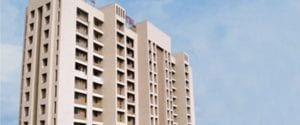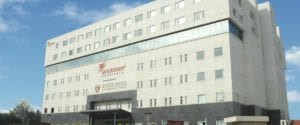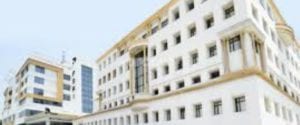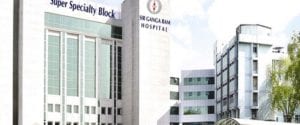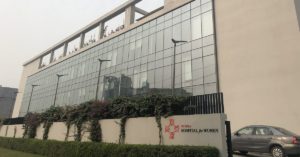Best Doctors in India for Balloon Sinuplasty
Best Hospitals in India for Balloon Sinuplasty
S L Raheja Hospital, Mahim, Mumbai
- City: Mumbai, India
Hospital Highlights:
- SL Raheja hospital is a 140-bed multi-specialty tertiary care hospital that is being managed by Fortis Healthcare Ltd.
- The hospital is a benchmark in healthcare and medical facilities in the neighborhood of Mahim & the western suburbs.
- L.Raheja Hospital, Mahim has one of the most effective ICU and Casualty care services.
- The hospital provides specialty medical services in Cardiology, Oncology, Neurology, Orthopedics, Mother & Child Care, and in Diabetes.
Wockhardt Hospitals, Mumbai
- City: Mumbai, India
Hospital Highlights:
- Wockhardt Hospitals were established in the year 1973, originally called First Hospitals and Heart Institute.
- Wockhardt Hospitals are super specialty health care networks in India, nurtured by Wockhardt Ltd, India’s 5th largest Pharmaceutical and Healthcare company.
- Wockhardt Hospitals is associated with Partners Harvard Medical International, an international arm of Harvard Medical School, USA.
- Wockhardt Heart Hospital performed India’s first endoscopic heart surgery.
- The hospital has a state-of-the-art infrastructure equipped with the latest technologies and modern equipment.
- It has special Centers of Excellence dedicated to the major specialties to provide hassle-free and high-quality clinical care.
Pushpawati Singhania Hospital & Research Institute, New Delhi
- City: New Delhi, India
Hospital Highlights:
- Established in 1996, Pushpawati Singhania Research Institute is one of the top hospitals in the NCR region, as well as one of the top facilities in India for gastroenterology. The hospital is one of South Asia’s first institutes in medical and surgical treatment for diseases related to digestion.
- The hospital is equipped with state-of-the art facilities coupled with the latest equipment as well as renowned consultants from various parts of India as well as other parts of the world.
W Pratiksha Hospital, Gurgaon
- City: Gurugram, India
Hospital Highlights:
- W Pratiksha Hospital, Gurugram, is one of the best hospitals in the NCR region. It is also a top hospital in India for IVF. Since its inception, the hospital has performed over 5500 successful IVFs. The hospital also specializes in gynecology.
- With over 20 years of experience in providing quality healthcare, the hospital is known as one of the most trusted and valued health providers in India.
- Equipped with world-class medical facilities and advanced technology, the hospital’s doctors and clinicians also have a track record of delivering excellent results. The hospital is also known for focusing on preventive well-being as much as on curative treatment.
- The hospital has earned the trust of its patients, by providing the best available treatments at affordable costs.
Narayana Superspeciality Hospital, Gurugram
- City: Gurugram, India
Hospital Highlights:
- Situated near DLF Cyber City, Gurugram, Narayana Superspecialty Hospital is one of the top medical facilities in the Delhi NCR region, catering to the needs of the people. Known for its commitment to quality medical care and patient service, the hospital is a state-of-the-art facility with planned and well-equipped sections, which includes a spacious OPD area as well as comfortable patient rooms.
- It is the closest super-specialty hospital from Indira Gandhi International Airport towards Gurugram, and also the nearest super specialty hospital from DLF Cyber City. It is also close to major residential areas in Gurugram.
- It is part of the renowned Narayana Health Group. Established in 2000, by Dr. Devi Shetty, a renowned cardiac surgeon, it has grown to be one fo India’s leading healthcare groups.
Sir Ganga Ram Hospital, New Delhi
- City: New Delhi, India
Hospital Highlights:
- Sir Ganga Ram Hospital, New Delhi is known to provide the latest medical procedures with the latest technology in all of its units.
- The hospital has a team of reputed doctors, nurses, and healthcare professionals that ensure that patients receive quality care at affordable costs.
- Staffed with a team of highly qualified doctors, dedicated nurses, and paramedical and non-medical staff, the hospital aims to lead in healthcare delivery, medical education, training, and research.
- As per the vision of the founder, the hospital also provides free treatment to the economically weaker sections of society.
- Sir Ganga Ram Hospital also provides training to young doctors under the Diplomate in National Board(DNB) program. The DNB program at the hospital was started in 1984 and it is known for currently running the maximum number of DNB specialties in the country. It also has the distinction of having the first bone bank in India.
CK Birla Hospital, Gurugram
- City: Gurugram, India
Hospital Highlights:
- The CK Birla Hospital in Gurugram is a NABH-accredited multi-specialty hospital.
- The hospital strives to increase the quality of healthcare by focusing on UK NHS nurse and midwife training requirements. Policies and practices derived from the National Institute for Health and Treatment Excellence (NICE) recommendations in the United Kingdom ensuring that a strong focus on safety, high-quality clinical care, and sanitation is maintained.
- The hospital’s cutting-edge technology and facilities allow for real-time communication and seamless collaboration among caregivers, ensuring accuracy and the best possible results. Those with foreign experience and accreditations make up part of the hospital’s team of clinicians.
KIMS Hospital, Hyderabad
- City: Hyderabad, India
Hospital Highlights:
- KIMS Hospital (a brand name of Krishna Institute of Medical Sciences) is one of the largest and best multi-speciality hospitals in Hyderabad. The hospital provides various treatments to an enormous number of patients.
- The hospital has a capacity of more than 3000 beds. KIMS Hospitals offers different healthcare services in more than 25 specialities and super specialities.
- The hospital is equipped with modern medical equipment and technology. It has robotic equipment to provide minimal invasive techniques for patients.
- The hospital is aimed at providing world-class healthcare facilities and services at an affordable cost for patients.
- The various specialities and departments of the hospital include neurosciences, gastroenterology & hepatology, robotic science, reproductive sciences, dental science, oncological sciences, organ transplantation, heart and lung transplantation and mother and child care.
Fortis Hospital, Shalimar Bagh
- City: New Delhi, India
Hospital Highlights:
- Fortis Hospital in Shalimar Bagh is a multi-super specialty hospital that strives to provide world-class patient care by leaving no stone unturned.
- Fortis, Shalimar Bagh, with 262 beds and a 7.34-acre footprint, provides the best level of medical care through its team of doctors, nurses, technicians, and management professionals.
Reliance Hospital, Mumbai
- City: Mumbai, India
Hospital Highlights:
- Reliance Hospital is one of the best super-specialty care hospitals in Navi Mumbai.
- The main purpose of this hospital is to become a trustworthy place for the best health and hope for society. The hospital is well connected to the suburbs of Mumbai and Navi Mumbai.
- The hospital has various specialty departments, viz., Accident & Emergency, Anesthesiology, Dental Services, Dermatology, Diabetology, Dietetics Nutrition, Endocrinology, ENT, Gastroenterology, General Surgery, Gynaecology And Obstetrics, Hepato Pancreato Biliary Surgery, Infectious Disease, Internal Medicine, Interventional Radiology, Laboratory Medicine, Minimal Access Laparoscopic Surgery, Nephrology, Neurosciences, Opthalmology, Orthopaedics, Paediatrics, Pain Management Palliative Care, Physical Medicine Rehabilitation, Plastic And Reconstructive Surgery, Psychiatry, Pulmonary Medicine, Radiology, Rheumatology, Transplant, Urology Andrology, Vascular Surgery
BALLOON SINUPLASTY
Balloon Sinuplasty is a type of endoscopic nasal surgery, which uses small balloon catheters that inflate in order to drain the large nasal sinuses. Also commonly known as the ‘smart sinus’ procedure, the balloon sinuplasty is often recommended for people with chronic sinusitis, when all other treatments for their condition prove to be ineffective.
The procedure is straightforward with minimal complications, and there’s no cutting or removal of any bones or tissue. It still carries a few risks, which includes the same types of risks that other sinus surgeries do.
This procedure has been adapted from angioplasty, where balloon catheters are used for diluting damaged or congested blood vessels near one’s heart.
Purpose
Balloon sinuplasty is a treatment for patients with sinus problems. If a patient had his problems diagnosed early, this procedure is more beneficial for them. However, for patients with chronic and long-lasting problems, the procedure may not be effective.
You should discuss with your doctor whether you are a candidate or not, for this procedure. Typically, patients having the following symptoms can benefit from this procedure.
- Recurrent sinus infections that show no response to the medication
- Chronic bad breath or foul taste in one’s mouth
- Headaches around the eyes
- Difficulty while breathing through the nose
- Chronic nasal problems
Preparation
Procedure
During the procedure, first, your doctor will insert a small flashlight at the end of a wire into your sinus cavity, so that he/she can see clearly. After this, they will be inserting a very slim and flexible balloon catheter into your sinus passages. Next, the balloon is slowly inflated for expanding the sinus opening.
Your doctor will be flushing out built-up pus and mucus in the sinus cavity using a saline solution. You will be feeling a decrease in pressure when this happens. While the balloon is in your sinus passage, it will gently restructure the bones around the sinuses. After this process is complete, your doctor will be removing the balloon. This will leave your sinus passage widened and the sinus will be free of any built-up pressure.
Recovery
After the procedure, most people are able to return to their normal routine within a day or two. Some people can even drive themselves home from the procedure.
In the week after the surgery, you will see some bloody drainage or discharge coming from your nose. This is no reason to worry as it is normal after any sinus surgery.
You might experience swelling as well as some fatigue and congestion. All of this can be expected after any sinus surgery. However, within a week, you should feel better and be free from any such symptoms.
After the surgery, your doctor will be instructing you not to blow your nose at all for around 24 hours. You need to avoid any kind of strenuous activity as well as it might elevate your heart rate for the first week. Sleep with your head elevated as this can help you relieve any discomfort.
Following your doctor’s instructions will aid a lot in recovering sooner. You might be prescribed an antibiotic to avoid any infections. Also, make sure that you take any prescribed drugs. You might be prescribed a pain reliever as well, though this procedure rarely causes too much pain.
Speak to your doctor before you take any kind of over-the-counter pain reliever. You might also be prescribed a saline solution for rinsing your nasal passages for three to seven days after your procedure. This will help in keeping the sinuses lubricated and help to promote healing.
Benefits
Balloon Sinuplasty is preferred by many as it has multiple benefits.
- Safe and Effective : The use of any surgical instrument involves some risk, but according to clinical studies, balloon sinuplasty is safe and effective comparatively in relieving symptoms of sinusitis, in carefully selected patients.
- Minimally Invasive : The technology used in this procedure makes the use of small, soft and flexible devices that are able to enter entirely through the nostrils. These devices are able to gently open blocked sinus openings in many cases, without the removal of bone or tissue.
- Reduced Bleeding: Since no tissue or bone is removed while using this technology, there is very minimal bleeding associated with this procedure.
- Improved Recovery Time : Most patients can return to their routine just one day after the surgery.
- Does Not Limit Treatment Options : This technology is an endoscopic tool and might be used with other sinus surgery techniques as well as other medical therapies. If you are having progressive disease, it will not limit your future treatment options. If the balloon fails to address your sinus problems, you can consider other options.
Risks and complications
All types of sinus surgery carry few risks and balloon sinuplasty is not an exception. The greatest potential complication is intracranial complications. In these cases, the connection between your brain and your nose is affected during your surgery which can cause brain fluid to leak into your nose. This complication doesn’t however happen quite often and can be usually fixed before your surgery.
There is also a chance of your nose changing slightly in appearance, after your surgery. Sometimes the swelling doesn’t subside for several days or the nose can look different in some cases once the swelling goes away.
If you are able to cleanse the area correctly, it might lead to an infection that will require immediate medical attention. Although most sinus surgeries can improve your sense of smell, there are some times when the surgery can make it worse.

